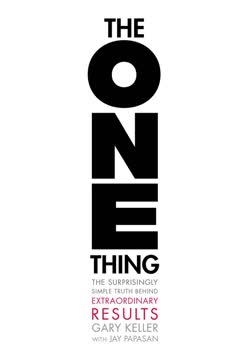Key Takeaways
1. Debt can be a powerful tool for building wealth when used strategically
Used appropriately, strategic debt is not a waste of money, but rather, an opportunity to increase the likelihood you will be able to accomplish your goals in the short, medium, and long term.
Strategic debt can enhance wealth building. This approach challenges conventional wisdom that all debt is bad and should be eliminated as quickly as possible. Instead, it posits that carefully managed debt can provide liquidity, flexibility, and opportunities for wealth accumulation. The key is to use debt in a way that allows you to capture a spread – earning a higher return on investments than the cost of your debt.
The power of leverage:
- Enables asset acquisition (e.g., homes, education) that can appreciate over time
- Allows you to keep more money invested for longer periods
- Can provide tax benefits in certain situations
Caveats:
- Requires discipline and financial literacy
- Not suitable for everyone – depends on individual circumstances and risk tolerance
- Should be balanced with adequate savings and emergency funds
2. Not all debt is created equal: Distinguish between oppressive, working, and enriching debt
All debt Is Not Equal: There are different types of debt.
Understanding debt categories is crucial. The author classifies debt into three main types:
-
Oppressive debt:
- High interest rates (typically above inflation + 6%)
- Examples: Credit card balances, payday loans
- Strategy: Eliminate as quickly as possible
-
Working debt:
- Moderate interest rates
- Tied to specific purposes (e.g., mortgages, student loans)
- Strategy: Manage carefully, balance with other financial goals
-
Enriching debt:
- Low interest rates (close to inflation)
- Could be paid off, but strategically kept
- Allows for potential investment gains exceeding debt cost
- Strategy: Utilize as part of a comprehensive wealth-building plan
By recognizing these distinctions, individuals can make more informed decisions about which debts to prioritize paying off and which may be beneficial to maintain as part of a broader financial strategy.
3. The L.I.F.E. phases: Launch, Independence, Freedom, and Equilibrium
We can embrace a sensible, balanced approach to debt throughout our lives; an approach that mimics the balance exhibited in nature, art, architecture, music, and even our own bodies.
The L.I.F.E. framework guides financial decision-making. This model provides a roadmap for managing debt and building wealth throughout different life stages:
-
Launch:
- Net worth < 50% of annual income
- Focus: Eliminate oppressive debt, build emergency savings
- Debt strategy: Avoid new debt, minimize existing debt
-
Independence:
- Net worth 50% - 200% of annual income
- Focus: Build assets, consider home ownership
- Debt strategy: Maintain working debt, avoid oppressive debt
-
Freedom:
- Net worth 200% - 500% of annual income
- Focus: Reduce debt ratio by building assets
- Debt strategy: Utilize strategic debt, focus on asset growth
-
Equilibrium:
- Net worth > 500% of annual income
- Focus: Optimize for retirement, maintain financial flexibility
- Debt strategy: Consider enriching debt, balance with substantial assets
This framework helps individuals tailor their debt and savings strategies to their current financial situation and long-term goals.
4. Paying down debt gives you a return equal to your after-tax cost of that debt
Your rate of return for paying down debt is exactly equal to your after-tax cost of that debt.
Understanding debt payoff returns is crucial. This principle helps in prioritizing debt repayment versus investing:
- High-interest debt (e.g., credit cards at 20%): Paying this off gives a guaranteed 20% return
- Low-interest, tax-deductible debt (e.g., mortgage at 4%): Effective return may be closer to 3% after tax benefits
Decision framework:
- Calculate the after-tax cost of each debt
- Compare to potential investment returns
- Prioritize paying off debts with higher rates than expected investment returns
- Consider maintaining lower-cost debts if investment opportunities are favorable
Factors to consider:
- Risk tolerance
- Time horizon
- Tax implications
- Liquidity needs
This principle underscores why eliminating high-interest debt is often the best "investment" one can make, while also explaining why maintaining some low-cost debt can be part of a sound financial strategy.
5. Liquidity matters: Cash is a form of insurance against life's uncertainties
Sh*t happens—Value liquidity.
Cash reserves provide financial resilience. Maintaining adequate liquidity is crucial for navigating unexpected life events and opportunities:
-
Emergency fund benefits:
- Covers unexpected expenses (medical bills, car repairs)
- Provides cushion during job loss or income reduction
- Reduces reliance on high-interest debt in emergencies
- Offers peace of mind and reduces financial stress
-
Recommended cash reserves:
- Launch phase: 3 months of expenses
- Independence phase: 6 months of expenses
- Freedom & Equilibrium phases: 6-12 months of expenses
-
Balancing liquidity with other financial goals:
- Don't overemphasize debt repayment at the expense of liquidity
- Consider cash reserves as part of your overall asset allocation
- Reassess liquidity needs at different life stages
Remember: While cash may not provide high returns, its value lies in flexibility and security. Having adequate liquidity can prevent the need to sell investments at inopportune times or take on high-interest debt during emergencies.
6. Saving is crucial: Aim for 15-20% of your income
Yes, you can—save.
Consistent saving is the foundation of wealth-building. The author emphasizes the importance of establishing a strong savings habit:
-
Target savings rate: 15-20% of gross income
- Includes retirement contributions, debt principal payments, and cash savings
- Employer matches count towards this goal
-
Strategies to increase savings:
- Automate savings through payroll deductions
- Increase savings rate gradually (1-2% per year)
- Save windfalls (bonuses, tax refunds) rather than spending them
- Live below your means – focus on needs over wants
-
Benefits of high savings rate:
- Accelerates wealth accumulation
- Provides more options for strategic debt use
- Increases financial security and flexibility
- Allows for earlier retirement or career changes
Remember: Saving is a habit that becomes easier with practice. Start where you can, even if it's below the target rate, and consistently work to increase your savings over time.
7. Compounding works both ways: It can exponentially help or hurt you
Compounding matters—For the upside and the downside.
Understand the power of compounding. This principle applies to both investments and debt, making it crucial to harness its power positively:
-
Positive compounding:
- Small, consistent investments grow exponentially over time
- Example: $200/month at 7% for 40 years = $525,000
- Start early to maximize the effect
-
Negative compounding:
- High-interest debt can spiral out of control
- Example: $5,000 credit card debt at 20% doubles in less than 4 years if unpaid
- Prioritize eliminating high-interest debt to avoid this trap
-
Strategies to leverage compounding:
- Invest early and consistently in diversified, low-cost index funds
- Reinvest dividends and capital gains
- Avoid withdrawals from long-term investments when possible
- Refinance high-interest debt to lower rates when possible
Remember: Time is your greatest ally in wealth-building. The earlier you start saving and investing, the more compounding can work in your favor.
8. Asset allocation and diversification are key to long-term wealth building
Every individual asset has terrible years. Diversified portfolios certainly have down years, but they're relatively bearable and not nearly as volatile.
Balanced portfolios reduce risk and enhance returns. The author emphasizes the importance of diversification across multiple asset classes:
-
Key principles:
- Spread investments across various asset types (stocks, bonds, real estate, etc.)
- Include both domestic and international holdings
- Rebalance periodically to maintain target allocations
-
Benefits of diversification:
- Reduces overall portfolio volatility
- Protects against severe losses in any single asset class
- Potentially improves risk-adjusted returns
-
Suggested allocation framework:
- U.S. stocks: 5-20%
- Developed international stocks: 5-20%
- Emerging market stocks: 5-20%
- U.S. bonds: 5-20%
- Developed international bonds: 5-20%
- Emerging market bonds: 5-20%
- Gold: 10-20%
- Commodities: 5-15%
- Real estate: 5-15%
Remember: No single asset class consistently outperforms. A well-diversified portfolio helps smooth out returns and reduces the impact of market volatility on your overall wealth.
9. Home ownership isn't always the best financial decision
Too many people buy houses too early in their life.
Renting can be financially advantageous. The author challenges the conventional wisdom that home ownership is always the best path to wealth:
-
Factors to consider:
- Time horizon: Plan to stay in the home for at least 5-7 years
- Market conditions: Are homes overvalued in your area?
- Flexibility needs: Career changes, family growth, etc.
- Hidden costs: Maintenance, property taxes, insurance
-
Renting advantages:
- Lower upfront costs and increased liquidity
- More flexibility to move for career opportunities
- Avoid potential losses in declining markets
- Simplifies budgeting (fixed monthly costs)
-
When to consider buying:
- Stable income and career
- Planning to stay in an area long-term
- Housing market presents good value
- Adequate savings for down payment and emergencies
Remember: Home ownership can be a path to wealth, but it's not guaranteed. Carefully analyze your specific situation and local market conditions before making this significant financial decision.
10. The Value of Debt strategy can significantly improve retirement outcomes
I will prove to you that working both sides of the balance sheet can give you the liquidity and financial flexibility to lift off and land with ease, elegance, and grace.
Strategic debt use can enhance retirement planning. The author's approach challenges conventional wisdom about being debt-free in retirement:
-
Key principles:
- Maintain low-cost, tax-efficient debt
- Invest difference between debt payments and potential investment returns
- Provides liquidity and flexibility in retirement
-
Potential benefits:
- Higher overall net worth
- Increased investment returns over time
- Tax advantages (e.g., mortgage interest deduction)
- Greater ability to withstand market fluctuations
-
Considerations:
- Requires discipline and ongoing management
- Not suitable for everyone – depends on risk tolerance and overall financial picture
- Should be balanced with adequate guaranteed income sources (e.g., Social Security, pensions)
Example: A couple with a $1 million portfolio and $400,000 mortgage at 3% might generate $46,000 in annual income, compared to $30,000 if they had used $400,000 to pay off the mortgage (assuming 6% portfolio return).
Remember: This strategy isn't about taking on more risk, but rather about optimizing the use of debt and assets to potentially improve long-term outcomes. Consult with financial professionals to determine if this approach aligns with your specific situation and goals.
Last updated:
FAQ
1. What is The Value of Debt in Building Wealth by Thomas J. Anderson about?
- Core premise: The book challenges the belief that all debt is bad, arguing that strategic, balanced use of debt can help build wealth over a lifetime.
- Glide path framework: Anderson introduces the L.I.F.E. glide path, a four-phase system for managing debt and assets as your net worth grows.
- Holistic financial management: The book encourages readers to manage both assets and liabilities, much like a company’s CFO, to increase liquidity, flexibility, and long-term security.
- Evidence-based approach: Strategies are backed by math, behavioral economics, and real-world case studies.
2. Why should I read The Value of Debt in Building Wealth by Thomas J. Anderson?
- Debunks debt myths: The book dispels the “all debt is bad” narrative, showing how certain types of debt can be valuable tools for wealth building.
- Actionable guidance: Readers receive practical advice, worksheets, and a clear roadmap for managing debt and savings at every life stage.
- Behavioral insights: Anderson addresses the psychological side of money, helping readers assess their discipline and make rational financial decisions.
- Improved financial security: Following the book’s strategies can reduce stress, increase flexibility, and improve retirement readiness.
3. What are the key takeaways from The Value of Debt in Building Wealth by Thomas J. Anderson?
- Debt can add value: Properly managed debt can reduce risk, lower taxes, and increase investment returns, contrary to traditional advice.
- Differentiate debt types: Not all debt is equal—oppressive, working, and enriching debts have different impacts and should be managed accordingly.
- Phased financial strategy: The L.I.F.E. framework guides readers through tailored debt and savings strategies as their net worth grows.
- Liquidity and compounding: Maintaining liquidity and allowing investments to compound are central to long-term wealth building.
4. What is the L.I.F.E. glide path method in The Value of Debt in Building Wealth by Thomas J. Anderson?
- Four financial phases: The glide path consists of Launch, Independence, Freedom, and Equilibrium, each defined by net worth relative to income.
- Dynamic debt ratios: Each phase has specific debt-to-asset ratio targets, gradually reducing debt as net worth increases.
- Inspired by mathematics: The framework is influenced by the Fibonacci sequence and golden ratio, aiming for natural balance and flexibility.
- Adapts to life changes: The glide path is not rigid; it evolves as your financial situation and goals change.
5. How does Thomas J. Anderson define and differentiate types of debt in The Value of Debt in Building Wealth?
- Oppressive debt: High-interest, burdensome debt (e.g., credit cards, payday loans) that should be eliminated immediately.
- Working debt: Low-cost, purpose-driven debt (e.g., mortgages, student loans) that enables asset acquisition and wealth building.
- Enriching debt: Strategic, low-cost debt (e.g., securities-based loans) that can increase returns and liquidity if managed responsibly.
- Management strategies: Each debt type requires a different approach, with a focus on eliminating oppressive debt and leveraging working/enriching debt wisely.
6. What are the main financial phases and debt strategies in the L.I.F.E. glide path from The Value of Debt in Building Wealth?
- Launch phase: Net worth less than 50% of income; focus on eliminating oppressive debt and building cash reserves.
- Independence phase: Net worth 50% to 2x income; manage working debt with a debt-to-asset ratio under 65% and increase savings.
- Freedom phase: Net worth 2x to 5x income; reduce debt-to-asset ratio toward 40% and prioritize asset growth.
- Equilibrium phase: Net worth over 5x income; aim for a debt-to-asset ratio around 25%, focusing on flexibility and retirement readiness.
7. How does The Value of Debt in Building Wealth by Thomas J. Anderson address the traditional advice to pay off all debt before saving or investing?
- Challenges conventional wisdom: Anderson argues that aggressively paying off low-cost debt can delay savings and reduce the benefits of compounding.
- Mathematical equivalence: Paying down debt yields a return equal to its after-tax cost; if investments can outperform this, investing may be preferable.
- Strategic prioritization: The book recommends eliminating oppressive debt first, but managing working debt alongside savings for optimal long-term wealth.
- Balanced approach: Emphasizes the importance of liquidity and flexibility over a rigid, debt-free mindset.
8. What is the role of liquidity and savings in The Value of Debt in Building Wealth by Thomas J. Anderson?
- Liquidity as insurance: Cash reserves protect against financial shocks, such as job loss or emergencies, and prevent forced asset sales.
- Breaking the cycle: Building a cash reserve of at least three months’ income is crucial for stability and stress reduction.
- Balanced savings rate: Anderson recommends saving at least 15% of income, including retirement contributions and principal payments on debt.
- Enables opportunity: Liquidity allows for flexibility in seizing investment opportunities and managing debt effectively.
9. How does The Value of Debt in Building Wealth by Thomas J. Anderson use mathematical and behavioral economics to support its strategies?
- Mathematical case studies: The book uses hypothetical families to show that balanced debt strategies can double or triple net worth over time.
- Spread capture: Demonstrates that if investment returns exceed after-tax borrowing costs, debt adds value by enabling more assets to compound.
- Behavioral discipline: Emphasizes the need for discipline—extra cash flow from lower debt payments must be saved or invested, not spent.
- Risk management: Highlights the importance of consistent, diversified investing and awareness of sequence of returns risk.
10. What investment philosophy and asset allocation does The Value of Debt in Building Wealth by Thomas J. Anderson recommend?
- Diversification is key: Advocates for a globally diversified portfolio across stocks, bonds, real estate, and commodities.
- Three buckets approach: Divide investments into Conservative (safe), Core (balanced), and Aggressive (higher risk) buckets tailored to life phase.
- Risk management focus: Consistent, moderate returns with lower volatility are preferred over high-risk, high-return strategies.
- Behavioral considerations: Asset allocation should account for personal discipline and the psychological impact of market volatility.
11. What is securities-based lending and how does it fit into the debt strategy in The Value of Debt in Building Wealth by Thomas J. Anderson?
- Definition and benefits: Securities-based loans (SBLs) allow borrowing against investment portfolios at low interest rates, often with no required monthly payments.
- Liquidity and flexibility: SBLs provide access to cash without selling investments, maintaining compounding and flexibility.
- Case study support: The book shows how SBLs can finance purchases more efficiently than traditional loans, increasing net worth over time.
- Risks and guidelines: SBLs require sufficient liquid assets and understanding of margin calls; they should be used responsibly and not for overextending credit.
12. How does The Value of Debt in Building Wealth by Thomas J. Anderson address home ownership, renting, and mortgage decisions?
- Don’t rush to buy: The book cautions against buying a home too early, emphasizing the importance of liquidity and flexibility.
- True costs of ownership: Highlights that maintenance, taxes, and transaction costs can add 5-10% annually to home expenses.
- Renting as a strategy: Renting is presented as a way to manage risk and use other people’s money to build assets, not as wasted money.
- Mortgage selection: Interest-only and adjustable-rate mortgages may be better for short-term stays, while fixed 15-year mortgages require high savings rates to be effective.
Review Summary
The Value of Debt in Building Wealth receives mixed reviews, with an average rating of 3.74 out of 5. Readers appreciate the book's unique perspective on leveraging debt as a financial tool and its practical advice for different life stages. Many find the content insightful and helpful for financial planning. However, some criticize the repetitive nature of the content and dry presentation. The book's approach challenges conventional wisdom about debt repayment, which resonates with some readers but not others. Overall, it's considered thought-provoking but may not suit everyone's financial philosophy.
Similar Books










Download PDF
Download EPUB
.epub digital book format is ideal for reading ebooks on phones, tablets, and e-readers.




